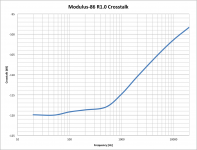This was EXACTLY the requirement for British 3 wire mains connected gear in the late 70's and early 80's.Are you really suggesting that every RCA/Phono barrel be directly connected to Chassis?
That's why a lot of UK manufacturers used evil [*] DIN connectors ... at least those who wished to meet their national safety standards.
The test was quite severe ... IIRC, less than 1R to mains earth measured with a current of 10A for all exposed conductive metalwork.
______________________
By the 90's, things had become less ridiculous. I wrote an internal engineering memo on how to design gear to easily meet (with minimal mods) both the letter AND spirit of (3 pin mains) Earthed Chassis & Double Insulated (2 pin mains) standards throughout the world. I wish I still had a copy 🙁
It's sad, so many makers STILL don't understand the spirit of the safety regulations. People STILL get killed on stage due to dubious wiring practices.
Today, with excellent inexpensive 'transformer-like' chips eg the THAT range, there is really no excuse. ALL the hum loop BS can be avoided by using balanced i/ps like Tom does. You can avoid interference AND meet the letter of the safety regulations, and more importantly, their spirit (the stuff which avoids killing people)
The advantage of balanced inputs isn't BS about "constant impedance giving greater clarity & definition" bla bla like the deaf Golden Pinnae claim. Its to REJECT CRAP.
But I can well believe that Tom had better sound from converting to balanced input. There's a LOT of crap out there.
[*]actually DIN small signal connectors were very reliable & sensible .. unlike truly EVIL RCA connectors. There were even simple options for balanced line signals. DIN speaker connectors were evil though.
Last edited:
I always wondered why phono inputs do not use balanced inputs more often. Downstream equipment use unbalanced probably for design convenience and compatibility.
I always wondered why phono inputs do not use balanced inputs more often.
Because back in the day, it would have cost an additional tube/valve, so single-ended became standard for domestic gear. Once a standard...
Since then, audiophiles have avoided balanced because of the association to "pro" gear (and as we know professionals don't know anything about *real* sound quality). 🙂
It's sad, so many makers STILL don't understand the spirit of the safety regulations. People STILL get killed on stage due to dubious wiring practices.
Today, with excellent inexpensive 'transformer-like' chips eg the THAT range, there is really no excuse. ALL the hum loop BS can be avoided by using balanced i/ps like Tom does. You can avoid interference AND meet the letter of the safety regulations, and more importantly, their spirit (the stuff which avoids killing people)
The advantage of balanced inputs isn't BS about "constant impedance giving greater clarity & definition" bla bla like the deaf Golden Pinnae claim. Its to REJECT CRAP.
But I can well believe that Tom had better sound from converting to balanced input. There's a LOT of crap out there.
Couldn't have said it better myself.
I agree with you on the 3- and 5-pin DIN connectors. They were really not bad. They kept the loop area down and it was impossible to reverse left and right channel. The speaker DINs on the other hand were never my favorite.
Tom
If you look at the phono cartridge output and the internal design, it seems best to have balanced. I have seen only one or two designs using balanced input. Does not make any sense to me not to use it since the cost is really not that different with a solid-state design.Because back in the day, it would have cost an additional tube/valve, so single-ended became standard for domestic gear. Once a standard...
Since then, audiophiles have avoided balanced because of the association to "pro" gear (and as we know professionals don't know anything about *real* sound quality). 🙂
Pro gear have a different set of priorities. Higher continuous power output and SPL is a priority normally not worried about in home audio. Good pro gear does convey the emotion of the performer very well. I once went to listen to an outdoor performance. Singing some opera passages, some performers gave me a funny feeling, I suspected something wrong was in the audio system until one couple from Europe came up to sing. Than made me realise Asian people singing opera just don't give you the feel. I guess the other way round would also be true for Asian music.
I think Harley Davidsons use DIN on their intercom.😀Couldn't have said it better myself.
I agree with you on the 3- and 5-pin DIN connectors. They were really not bad. They kept the loop area down and it was impossible to reverse left and right channel. The speaker DINs on the other hand were never my favorite.
Tom
If you look at the phono cartridge output and the internal design, it seems best to have balanced. I have seen only one or two designs using balanced input. Does not make any sense to me not to use it since the cost is really not that different with a solid-state design.
I agree. But since when has audiophiles gone for the sensible solution? 🙂
The odd thing is that the main proponent of DIN in audio (NAIM) used BNC for the phono inputs when the DIN would have given them a balanced input. IME BNC and the sort of cables used in turntable cabling do not work well together...
The villian in this story was Alastair Robertson-Aikman of SME. His 3009 arm had gold plated RCA phono cables (actually quite terrible ones with the extra long centre connector). As any gear worthy of the label HiFi in the 60s & 70s was expected to be paired with an SME and its cables, this became the 'standard'.
Tony Emerson & Don Barlow (who did the LEAK MC cartridges) told me that before that, '4 wires + earth' in arms was common as was a 5 pin connector (a Bulgin or one of dem new-fangled DINs)
Tony Emerson & Don Barlow (who did the LEAK MC cartridges) told me that before that, '4 wires + earth' in arms was common as was a 5 pin connector (a Bulgin or one of dem new-fangled DINs)
Sumiko premier MMT had a DIN connector, but came with cables that converted to RCA, never made sense to me. Somebody just did not like DIN for some reason.
DIN was not British ?.............. Somebody just did not like DIN for some reason.
At least SME ended up using a 5 pin arm connector which allows for balanced operation. Interestingly my SME 345 uses van den hul twinax cable so is wired balanced even if it terminates in phonos. Working from speakers backwards on my upgrades at the moment, but when I get to a new phono stage it will be balanced.
DIN was difficult to solder so that might have been why. Apart of course from American world domination.
At least SME ended up using a 5 pin arm connector which allows for balanced operation. Interestingly my SME 345 uses van den hul twinax cable so is wired balanced even if it terminates in phonos. Working from speakers backwards on my upgrades at the moment, but when I get to a new phono stage it will be balanced.
Hmm, the SME 345 looks like an interesting design. But I do agree that balanced throughout the system is the way to go. At least second to full digital system to the speaker outputs like the TACT.
The Modulus-86 once again pushes the limits of the APx525. It turns out the crosstalk is measured by measuring the RMS voltage on the two channels and computing the ratio. This works well if the crosstalk is significantly above the noise floor. For the MOD86, that is not the case. The crosstalk components are only about 10-15 dB above the noise floor, hence, the AP reports a pessimistic figure for the crosstalk.
I performed FFTs with input signals of 20, 50, 100, 200, 500, 1k, 2k, 5k, 10k, and 20k Hz and measured the crosstalk manually from the FFT. Result attached.
Tom
I performed FFTs with input signals of 20, 50, 100, 200, 500, 1k, 2k, 5k, 10k, and 20k Hz and measured the crosstalk manually from the FFT. Result attached.
Tom
Attachments
Last edited:
- Home
- Vendor's Bazaar
- Modulus-86: Composite amplifier achieving <0.0004 % THD+N.

